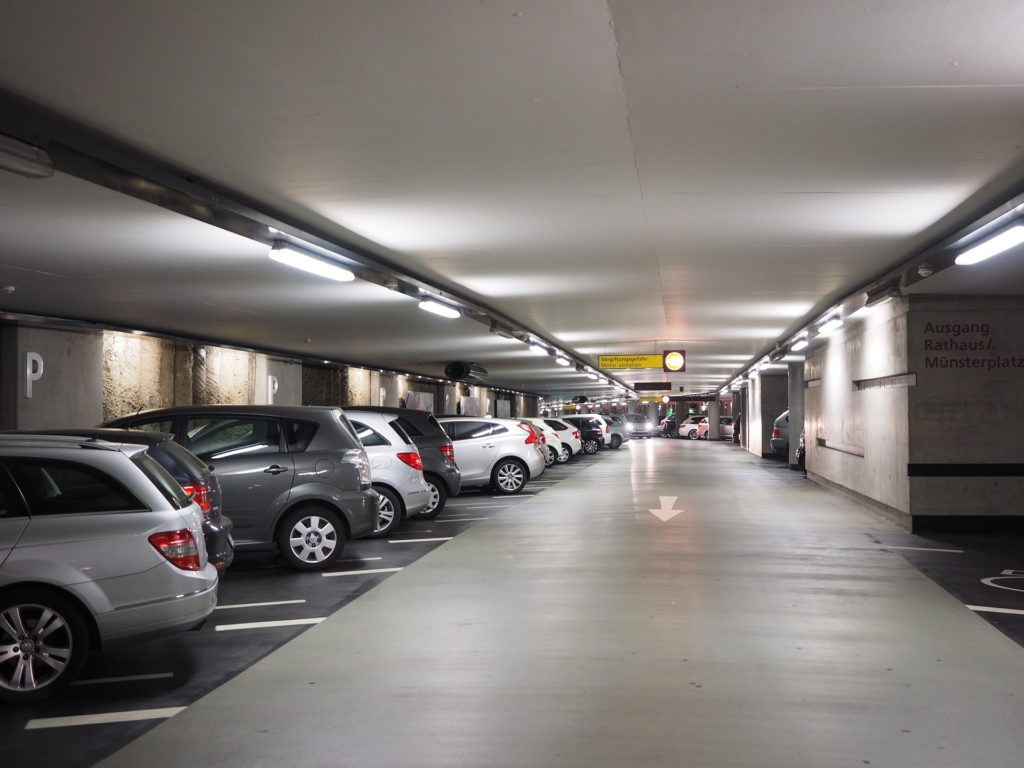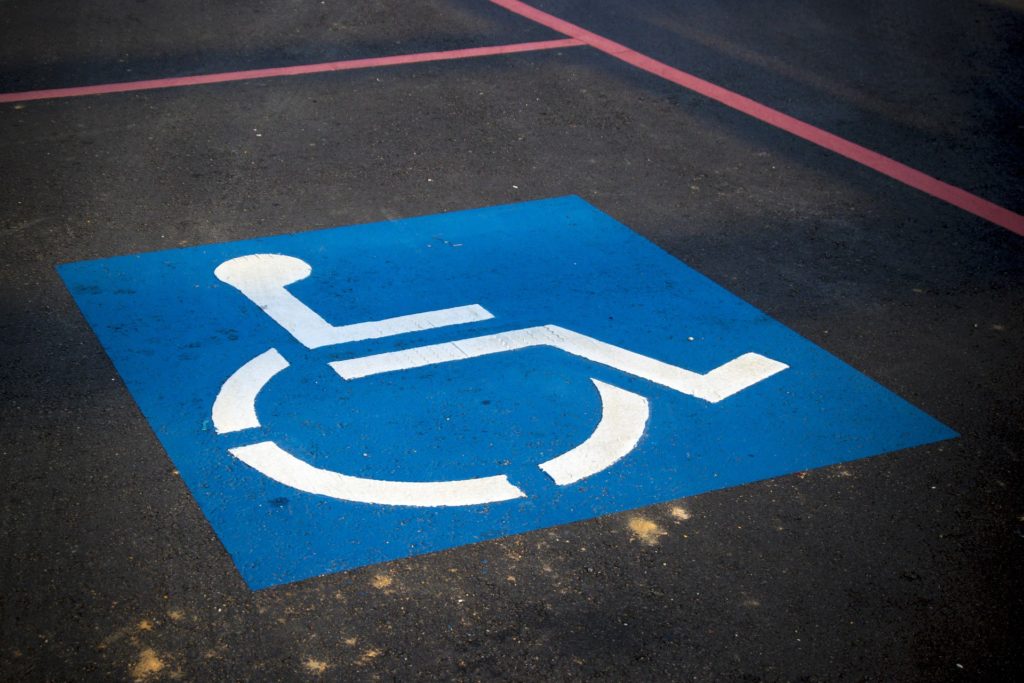Have you ever been to one mall where, after parking in a designated spot, you find it difficult to exit your car without the risk of hitting the car next to you? You and the cars next to you have parked correctly, it’s just that you and the other cars are parked too close to each other. But then you go to another mall’s parking lot and find that, even under the same circumstances, you suddenly have so much room to open your door and get out of your car safely.
Parking spot sizes vary in different establishments, but while they are different, all establishments adhere to the same standard parking space sizes. So, while some establishments follow the bare minimum and provide the legally required size for parking spaces, more generous establishments measure out bigger parking spaces. While it’s much easier to park in roomier parking spaces, here’s the measurements you’ll have to learn how to park in if you want to properly park in an average-sized parking space.
Defining Parking Spaces
Everyone who drives knows what a parking space is. In private or public establishments, parking spaces are designated areas where a person is legally allowed to park their car. Some establishments or homes don’t like people parking their cars on the side of any road or driveway, so if someone parks in an area that’s not a designated parking space, the owner of that land has the right to have the car towed at the vehicle owner’s expense.

While most parking spaces are free, some establishments may impose fees or a time limit. Parking lot buildings often have fees for the maintenance, security, and convenience it has compared to the risks of free parking on the street. However, parking is only limited to designate areas where there are markings on the ground.
Parking Space Designs
Parking spaces are usually designated by markings on the ground, but in some parking lots, they are numbered or labelled exclusively to one person. Vehicles can simply drive and park within the markings, since most vehicles can fit via parallel, perpendicular, or angled parking. These three types are the most common types of parking arrangements where a vehicle can park independently. Parking spaces that require assistance include automated parking systems where machines are used to store cars rather than the driver maneuvering the car to a parking slot.
Standard Parking Sizes: Width
The standard parking spot size varies according to country. In the United States, parking lots must have a minimum width of 9 feet (around 2.7 meters). Given that the average width of a car is 6 feet, that provides you with around 1.5 feet on either side of the car as allowance, assuming you’ve parked your vehicle properly.
If the car on the parking spot next to you is also parked properly, that will give you a three-foot allowance between cars – that should be roughly just enough to open the door and get out without bumping your door on the car beside you. Angled parking spaces offer wider allowance for you to open the door, but perpendicular parking designs and parallel parking spots (especially on narrow roads) offer less allowance.
When setting parking ground markings, a business can make their parking spot width as large as they’d like as long as it meets the standard parking size. However, if they charge for parking, it’s possible that wider parking space may cost more to offset the costs of having less cars parked.
Standard Length
While parking space width has an average, its length is more difficult to establish given that cars have different lengths but roughly share the same widths. A Nissan Juke, for example, has an overall length of almost 14 feet (4.14 meters), but a Toyota Fortuner is at almost 16 feet (4.8 meters) even though both have a width difference of just nine centimeters.

The average length of a parking spot, therefore, really depends on the establishment defining the parking spaces. However, for perpendicular and angled parking spaces, it’s common to have around 10 to 18 feet (3 to 5 meters) in length as this is where most car lengths fall under. Some parking lots restricted to compact cars may have lengths as small as 10 feet, but for the most part, the standard parking space length is between 16 to 20 feet (5 up to 6 meters), with most parking spaces measuring at 19 feet. For parallel parking spots where there need to be some allowance between the cars, the length may measure between 20 to 24 feet (6 to 7.5 meters) long.
Standard Parking Size in Other Areas
The recommended car parking size in the United Kingdom is around 8 feet (2.4 meters) wide by 16 feet (4.8 meters) long, according to the Planning Service Agency of the Department of the Environment. This has been the parking standard since 1999, though, and has not taken into consideration that cars have grown much bigger in the last 20 years. As such, some modern parking lots may choose to provide bigger parking spaces than the provided standard.

The Australian parking size standards as of 2013 under the Transport Roads & Maritime Services set the standard to 8 feet (2.4 meters) wide by 17 feet (5.4 meters) long.
Special Types of Parking Spaces
These standards are limited to average parking spaces. However, special types of parking spots may have different size standards.
Parking Spaces for Persons with Disabilities
Whether the driver is a person with disabilities (PWD) or has a passenger that is a PWD, some establishments provide special parking spaces. Unlike regular parking spaces that are unlabeled, a PWD parking spot has the International Symbol of Access on the ground or on a sign next to the parking spot. In some cases, it may be cordoned off by traffic cones and other objects only to be removed by the establishment’s staff when a person needs to park there.

PWD parking spots are usually the spaces closest to the establishment’s entrance. It is considered rude to park in a PWD spot if you aren’t a PWD or driving with someone who is. However, since it is not illegal to park in a PWD spot, there are some who tend to ignore that unofficial rule and park anyway since it is conveniently close to the entrance and is rarely occupied.
In the United States, the US Access Board stipulates the multiple rules on what PWD parking spaces should look like, from the additional allowance provided on the side of the car to its accessibility to the establishment’s entrance.
Women’s Parking Spaces
Some countries, including Germany, China, and Korea have established required parking exclusive to women. These parking spots are in high-visibility areas and were created as early as the 1990’s as an attempt to protect women from sexual assault. During its inception, plenty of women felt unsafe in parking garages and parking lots because garages were relatively dark and some parts of parking lots were secluded.

As a law in Germany, at least 30 percent of parking spots must be exclusive to women. While all parking spaces provide this, it is possible for establishments to provide further security measures for all genders by adding surveillance systems and roaming security. If you happen to be visiting a place that practices women’s only parking spaces, these spots are designated by its bright pink markings and signs.
While there is no universal standard, expect most parking spaces to fit average car sizes. If you have a vehicle that’s larger than your average consumer car, expect your car may have a tighter squeeze under the regulated standards or average size of parking lots in the world.






